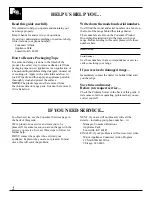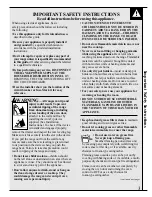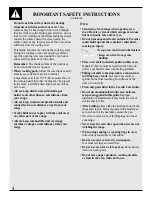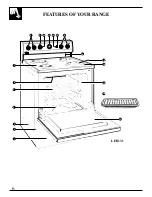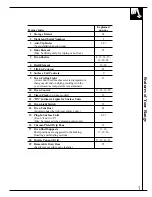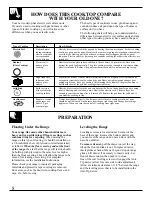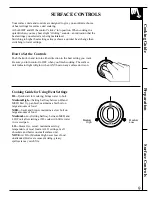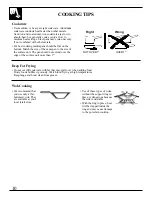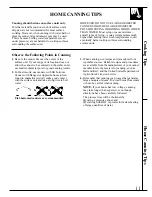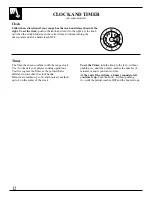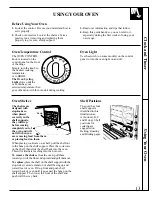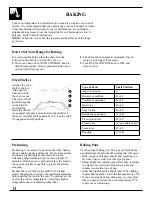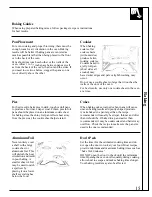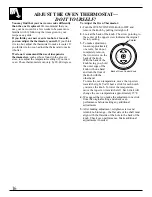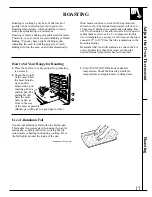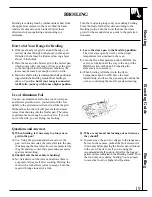
5
Important Safety Instructions
Surface Cooking Units
• Use proper pan size—Select
cookware having flat bottoms
large enough to cover the surface
unit heating element. The use of
undersized cookware will expose a portion of the
surface unit to direct contact and may result in
ignition of clothing. Proper relationship of
cookware to surface unit will also improve
efficiency.
• Never leave surface units unattended at high
heat settings. Boilover causes smoking and greasy
spillovers that may catch on fire.
• Be sure drip pans and vent are not covered and
are in place. Their absence during cooking could
damage range parts and wiring.
• Do not use aluminum foil to line drip pans or
anywhere in the oven except as described in this
guide. Misuse could result in a shock, fire hazard
or damage to the range.
• Only certain types of glass, glass⁄ceramic,
earthenware or other glazed containers are
suitable for cooktop cooking; others may break
because of the sudden change in temperature.
• To minimize the possibility of burns, ignition of
flammable materials and spillage, the handle of a
container should be turned toward the center of the
range without extending over nearby surface units.
• Always turn surface unit controls off before
removing cookware.
• Carefully watch for spillovers or overheating
of foods when frying at high or medium high
temperatures.
• To avoid the possibility of a burn or electric
shock, always be certain that the controls for
all surface units are at off position and all coils
are cool before attempting to remove the unit.
• Do not immerse or soak removable surface
units. Do not put them in a dishwasher.
• When flaming foods are under the hood, turn
the fan off. The fan, if operating, may spread
the flame.
• Foods for frying should be as dry as possible.
Frost on frozen foods or moisture on fresh
foods can cause hot fat to bubble up and over
sides of pan.
• Use little fat for effective shallow or deep-fat
frying. Filling the pan too full of fat can cause
spillovers when food is added.
• If a combination of oils or fats will be used
in frying, stir together before heating, or as fats
melt slowly.
• Always heat fat slowly, and watch as it heats.
• Use deep fat thermometer whenever possible to
prevent overheating fat beyond the smoking point.
• Never try to move a pan of hot fat, especially a
deep fat fryer. Wait until the fat is cool.
• Never clean the cooktop surface when it is hot.
Some cleaners produce noxious fumes and wet
cloths could cause steam burns if used on a
hot surface.
SAVE THESE INSTRUCTIONS
Содержание LEB131
Страница 29: ...29 The Problem Solver NOTES ...
Страница 30: ...30 NOTES ...


